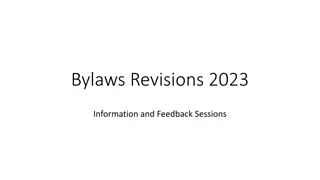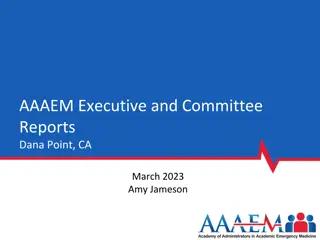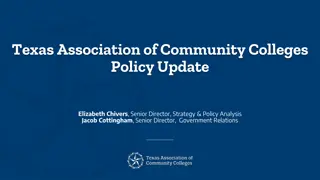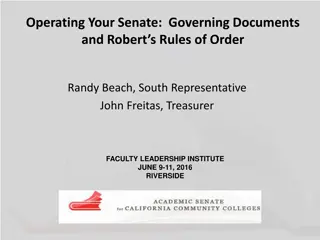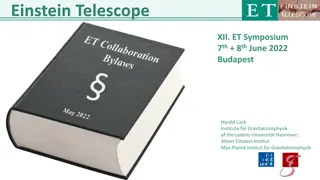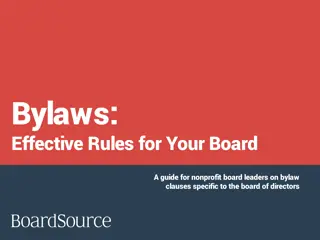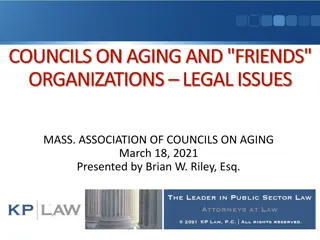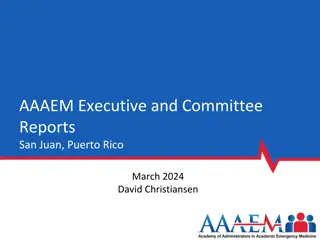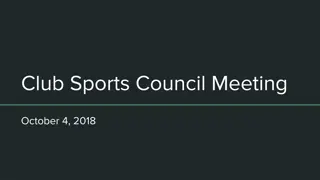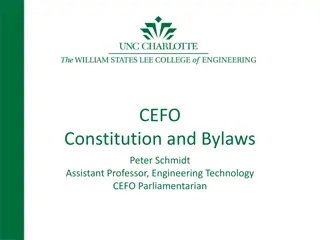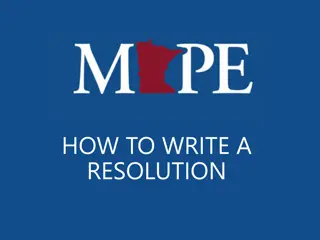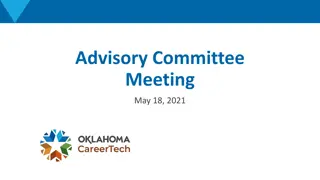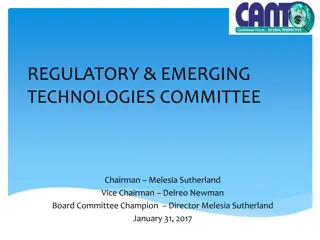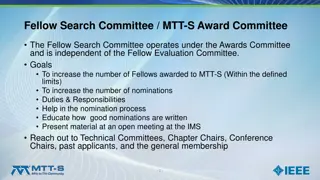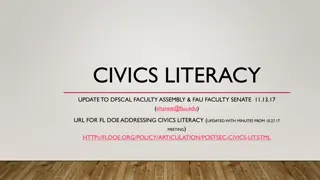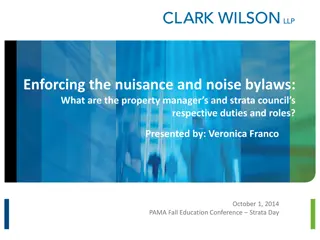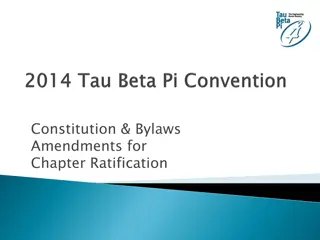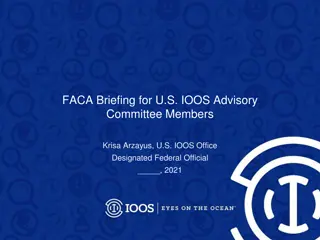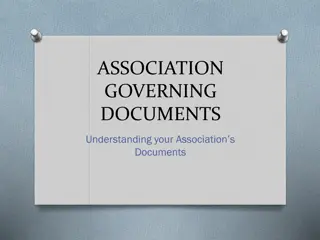Bylaws Update Committee and Two-Tier Bylaws Overview
Detailed information on the Bylaws Update Committee, Two-Tier Bylaws system, ET Bylaws committee members, changes and discussion items, FRTE vs. FTE comparison, and considerations for making the Bylaws Update Committee a standing committee within the SSB.
Download Presentation

Please find below an Image/Link to download the presentation.
The content on the website is provided AS IS for your information and personal use only. It may not be sold, licensed, or shared on other websites without obtaining consent from the author. Download presentation by click this link. If you encounter any issues during the download, it is possible that the publisher has removed the file from their server.
E N D
Presentation Transcript
Bylaws Bylaws Update Committee Update Committee Harald L ck Michele Maggiore Viviana Fafone Patrice Verdier Samaya Nissanke
Two Tier Bylaws The Bylaws are divided into two Levels. The Level-1 part provides a stable basis for the underlying organisation of the Collaboration, which should only be changed for very important reasons and with the support of a large majority of the Collaboration members, initiated with a sufficiently high threshold to avoid too frequent changes. The Level-2 part describes the rules of the collaboration at the working level, with a lower threshold to adapt to changing needs without too much bureaucracy. Level 1: describes the foundations of the Collaboration: Code of Conduct Collaboration structure brief descriptions of the specific boards the threshold for changes requires a 15% Collaboration Board majority for a change motion and a 2/3 or even qualified majority in voting to make the change. Level 2: details on specific boards in separate documents Mandates Policies Procedures lower threshold for changes allows keeping the Bylaws up to date and to respond to changing needs, along the ET lifetime.
ET Bylaws Bylaws committee: Harald L ck Michele Maggiore Viviana Fafone Patrice Verdier Samaya Nissanke
ET Bylaws Bylaws committee: Harald L ck Michele Maggiore Viviana Fafone Patrice Verdier Samaya Nissanke
Changes / Discussion items Removed Section on procedures for forming the Collaboration We state authorship rights in full collaboration paper as a member right, but we do not define when a paper becomes a full-Collaboration paper. Delegate to Editorial Committee? How long does a person leaving the Collaboration remain in the authorlist? CB Membership: A question was raised in the Update committee: I am not convinced by the possibility of having more than 1 delegate per RU: with 1 member per RU, the CB is already a committee with more than 80 members. Should we consider a weight per RU as a function of FRTE? Suggestion to call the Diversity, Equity, Inclusion, Access and Ethics Committee (DEIAEC) IDEA committee and form a separate one for ethical aspects and academic integrity
FRTE vs FTE FRTE takes better account of personal commitment FRTE is not verifiable (with reasonable effort) FTE allows a better estimate of the true workforce
Bylaws Update Committee Shall the Bylaws Update Committee become a standing committee inside the SSB, regularly checking whether the Bylaws need updating? In that case we propose for the Bylaws: Changes of the Level-1 Bylaws can be initiated by the ET Collaboration Spokesperson the ET Collaboration Board with a motion supported by at least 15% of its total membership the Bylaws Updating Committee, which is a committee of the Service and Standards Board by proposing changes of the Bylaws to the CB. The proposal will be submitted to the CB at least three weeks prior to a CB meeting, where it will be discussed. It may be amended by the proponents following this discussion. The final version of the proposal is again discussed in a CB meeting and then voted on. Accepting a change of the Bylaws requires a qualified 2/3 majority of votes excluding abstentions, votes not cast and blank votes. The vote must be done electronically
Communications Board How to handle the Communications Board in the Bylaws? Inside SSB? Keep it separate due to its special role? The Communications Board was agreed as an overarching body for both the Collaboration and the Organisation.


